There’s a category of questions that I see posted on Wavy/curl groups and forums that I would classify as uneven curl pattern problems. I have an uneven curl pattern. I still have days where my hair is quite uneven, but when I take the time to focus on balancing out my pattern, I feel like I am fairly successful. I thought my tips and tricks may help some others out there!
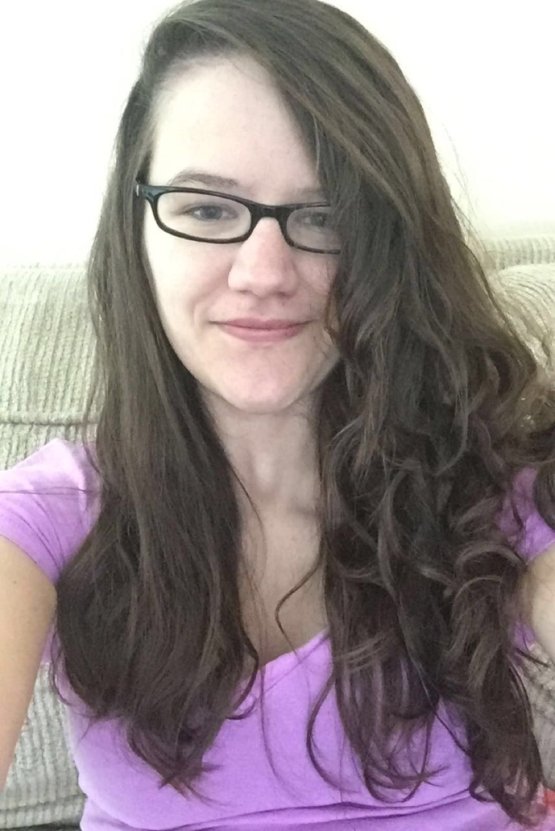
This was a few months after I started the curly girl method. Thankfully, days like this where my curl pattern is super uneven are more rare now that I’ve learned tips and tricks to help prevent it!
What Is An Uneven Curl Pattern?
An uneven curl pattern is when your waves/curls aren’t all the same tightness in all sections of your head. For example, you may have loose waves in one section and tight waves in another. It’s possible to have unevenness in any area of your head.
However, it seems to me like there are two types of uneven curl pattern that are the most common.
It is common to have the top layer of your hair be straighter than the underside. For wavies, some will have waves on the outer section and curls underneath, while others will have straight hair on top and waves underneath.
The second variation that I seem to see most often is front vs back. Many people seem to have straighter hair up near their face, and tighter waves or curls in the center of the back of their head.
It can be anywhere, though. My left side from the ear on forward is my straightest section. A thin section right near that ear is often totally straight! My tightest section is the right side of my head, from the ear on forward, I tend to get multiple 2C spiral waves there. I find this particularly challenging because my hair has a natural side part on the left.
Meaning, I flip my hair over so that I have more hair on the right side of my head than the left. This leaves my left side with less hair, and with starighter/flatter hair which can make the difference in my curl pattern really visible or make my hair seem really lopsided even in terms of volume.
The back of my head is sort of in the middle, with most of my hair on the outside in the back being 2A to 2B, and the waves on the underside is tighter in all areas, but especially in the back. My underside ranging more 2b-2C everywhere. Because of this range in my hair, I was able to make a wavy hair pattern chart using photos of my own hair!

On my left side right in front, it goes almost straight sometimes if I don’t “baby” it while styling, especially if I am in need of protein.
What Causes An Uneven Curl Pattern?
In many cases, an uneven curl pattern is just nature. However, an uneven curl pattern can also be the result of having different lengths (shorter hair tends to curl up tighter), or damage.
While perhaps less likey, uneven treatment may result in an uneven curl pattern appearance, too. For example, if you are getting enough gel on the sides of your hair, but aren’t getting your hair well-coated in the back, that may make the front of your hair appear curlier (because it is better supported and better defined by the gel) than the back.
A similar thing could happen with technique, if you spend more time scrunching the front of your hair than the back, it can result in the front drying in a tighter pattern than the back which got less attention. So, it can’t hurt to really take a close, critical look at your techniques to make sure it’s not something like that.
Many of us just have never had, and never will have, a perfectly consistent curl pattern no matter what we do. That’s totally okay! I have moments where I find myself wishing my hair was more consistent, especially when my straighter section is looking really straight. Or sometimes I look at the underside of my hair and see how it’s curlier and wish the exterior looked like that!
However, I don’t truly long for hair that is perfectly consistent. I like the look of naturally textured hair, and naturally textured hair is not perfectly consistent in most cases. This is just my own observations so I could definitely be wrong, but I think having an uneven pattern may be more common in those with wavy hair vs curly hair.
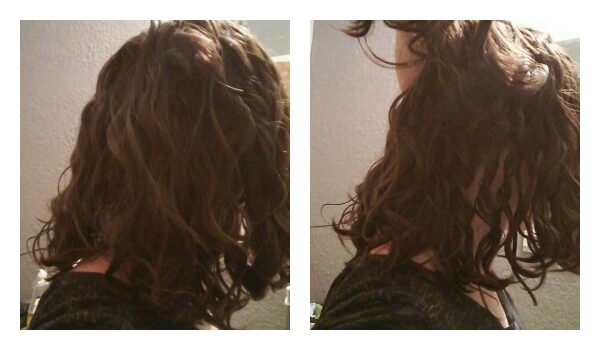
On the left you’re seeing the back of my head with all of my hair down. On the right is the back of my hair when I left up the canopy layer, revealing spirals. The outer layer of my hair is significantly straighter than the underlayer.
Underside of Hair is Curlier Than The Top Canopy
If the underside of your hair is curlier than the top layer of your hair (called the canopy) the canopy layer probably has environmental damage. The canopy is exposed to the elements, while the underside is protected. This difference can result in the outer canopy being damaged and straighter.
If your hair is curliest at the nape of your neck, this may be the result of the hair being finer or shorter. Often the hair at the nape of our neck breaks off due to friction damage from our clothing. If your hair in that section is shorter, that can make them curl up tighter due to having less weight weighing them down.
It’s also common for the hair at the nape of the neck to be finer than the rest of your hair. That “baby hair texture” can allow those hairs to curl up tighter in some cases.
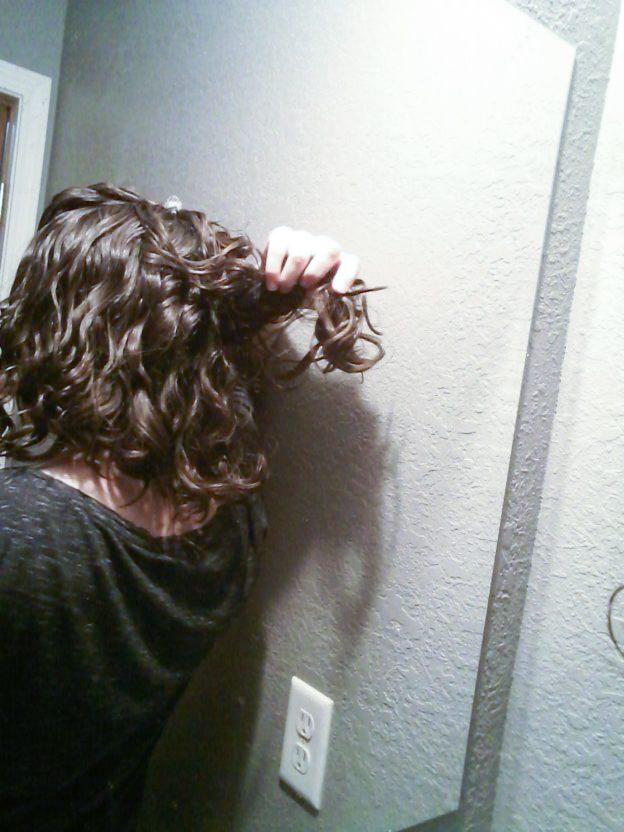
Back of Hair Is Curlier Than The Front
If the back of your hair is curlier than the front, this may be the result of the front of your hair being damaged. The Curly Girl Handbook mentions that hair in the front of our head sometimes grows more slowly due to being more damaged than the back of our hair. Typically the front of our hair is “in the action” more. We pull it back more, we touch it more to get it out of our face, it may get caught in our glasses, etc.

My left side vs my right side. My left side is always straighter than my right, but how dramatic the difference is varies depending on my protein level and techniques used.
One side of my hair is curlier than the other
If you find that one side of your head (or the back) is straighter than the rest, this can be from friction damage while sleeping. For example, if you always sleep on your right side, you may find that the hair on the right side of your head is more damaged, and that portion may be looser textured than the rest as a result of that damage.
Tips For Preventing Uneven Curl Pattern
Whether or not you can prevent an uneven curl pattern in the future really depends on the cause of your uneven curl pattern. If it’s entirely natural, you won’t be able to change that.
If your uneven curl pattern is the result of damage, you can try to use reparative products. I don’t have experience with the myself, but many people swear by Opalex products for repairing damage. You can also work to gently care for your new growth, so that once your hair grows out, it will be less damaged and your patter may be more even.
Some tips for being gentler on your hair would include stopping the use of heat tools, not dyeing your hair, only detangling your hair while in the shower with conditioner in it, using gentle accessories when putting your hair up/back, and protecting your hair while you sleep. I have a blog post on how to sleep on wavy hair if that is of interest.
If your uneven curl pattern is caused by varying lengths, you could get a haircut that is designed to try to even out your pattern.
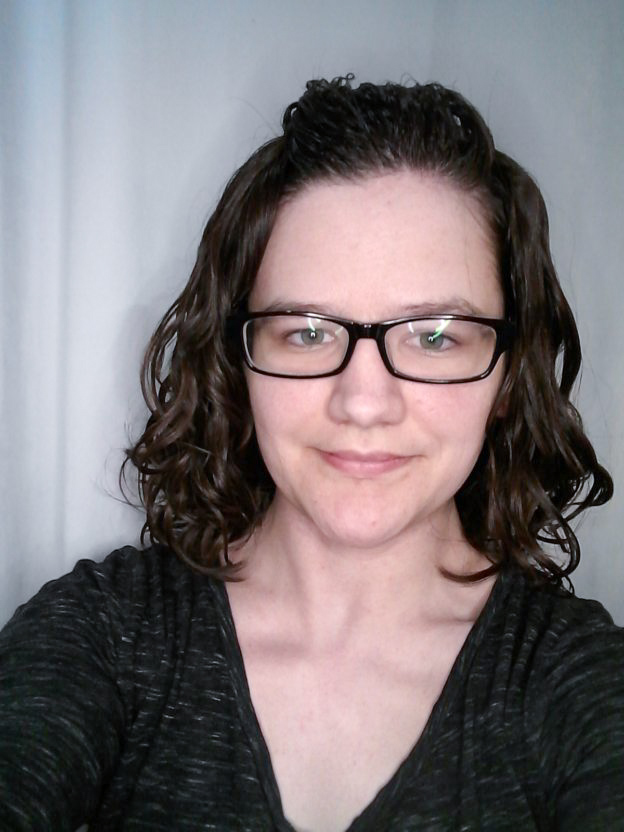
This is what I consider to be a decent result. My curl pattern is nowhere near perfectly consistent. I still have a flatter side. But, my volume is closer to balanced, and I have texture on both sides. Most people won’t stare close enough to notice how many spirals you have on one side vs the other, or those types of details, anyway.
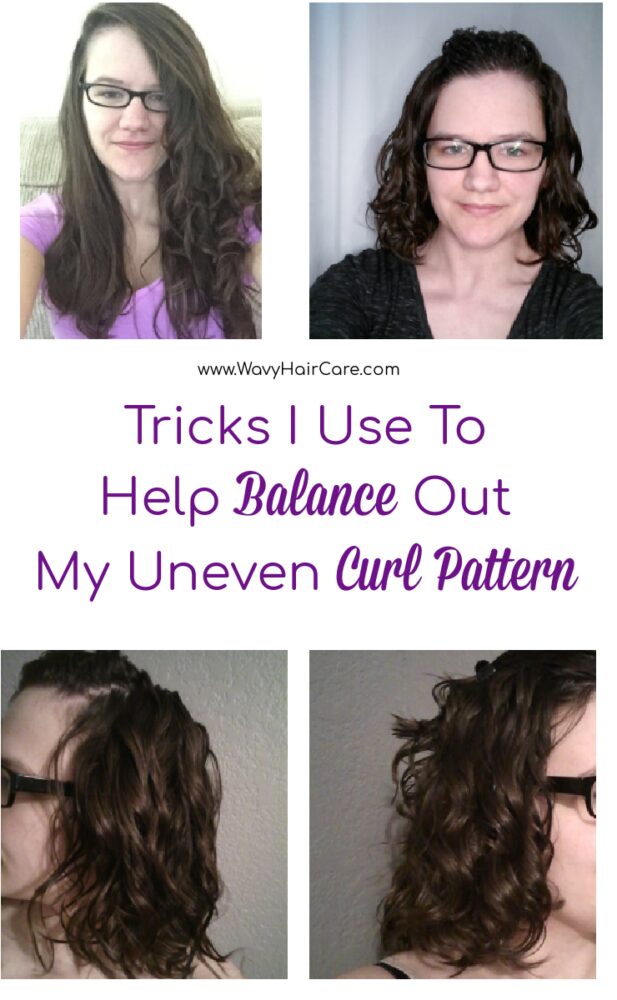
How I Balance My Straighter Section And Curlier Section
Just for full transparency, I don’t do these things all the time, and they are not perfect solutions. Balancing out my curl pattern basically requires giving extra attention to my straighter side to help enhance it. It requires a little bit more work, but mostly, it requires being thoughtful about my techniques.
Sometimes I have that focus and sometimes my mind gets more focused on some other part of my routine. I am often trying out new techniques or products and I sometimes get so excited about what I am doing new that I forget to really nurture my straighter spot.
Also, even when I use all of these, it doesn’t make my hair perfectly uniform. I can’t turn my straight section into 2C waves, or even 2B waves most of the time. I feel that is largely the natural of natural haircare, you can’t just pick your texture, you have to work with what you naturally have.
So, I still will have my straighter side be a bit straighter, and my curly side be a bit curlier no matter what. However, these things bring me closer to a balance than I get if I don’t do these things.
- Diffuse the straighter section earlier. My hair is very easily weighed down by water, so fighting against water weighing me down is a big part of how I draw out my waves. I typically diffuse ALL of my hair upside down for 5 minutes, but after that, I move on to diffusing my head in 1/4 sections. Diffusing my straightest section first means that section has the least amount of time to get weighed down by water, leaving it slightly tighter than it would otherwise be. New to diffusing? I have a how to diffuse your hair tutorial.
- Scrunch the straighter section more. I sometimes find that scrunching longer breaks up my curl clumps, so I tend to try to avoid it in general. However, with this straighter section, it definitely helps draw out waves to scrunch it more. So for this particular area, I scrunch a bit more and deal with skinnier clumps for the benefit of having waves in this section vs having a straight patch.
- Microplop the straighter section more. Similar to scrunching, microplopping can break up my curl clumps if I do it for too long. However, in this area I feel the benefits of microplopping a bit more (getting waves out of this straighter section) outweigh the cons (having skinner clumps). I have a microplopping tutorial if you aren’t familiar with the technique.
- Keep my protein levels up. One of the ways I know it’s time to do a protein treatment is when my straighter section gets really straight. Once I do a protein treatment, it waves back up in a really visible way, while my curlier side doesn’t get much tighter. I’m not sure why my straighter section seems to have a bigger visual change from protein than my curlier section has. I am also not sure if it would be true for other people or not. If you’re working to learn your hair though, it’s something to keep an eye on to see if your straighter section seems to be impacted by how much protein your hair is getting.
- Use a curl enhancer. I don’t usually do this, but when I really want to even my pattern, I use a curl enhancer just on this straighter section.
Other Tips & Tricks For Correcting Uneven Curl Pattern
These are concepts I have only attempted a couple of times and didn’t find success with. I am not sure if they just weren’t right for my hair type, or if I would need to put more time and effort into making them work for me.
However, I know these work for some other people with wavy hair. So while I can’t really give you tips or tricks for how to get these to work for you, here are a few concepts I’ve read about that you can google to try to learn more if you’re interested.
- Finger coiling. This is basically just twisting a curl clump to try to make it spiral tighter than it’s wanting to do on its own.
- Denman brush techniques. Some people use a denman brush to create spirals in hair that wouldn’t spiral on its own, and/or to create even sized curl clumps and even curl definition.
- Cutting off damage. Some people will find that the end of their hair is straight while the portion higher up curls well. Cutting off the damaged, straight ends can assist with getting a more uniform curl pattern.
If you have any other tips or tricks that work well for you to help balance your curl pattern, drop a comment. I’d love to hear them!
Want to read more about wavy hair? Check out my blog post directory, it’s a list of all my blog post titles with links.
My left side is very curly. My right side is straighter. It’s so weird but I accept it as it is.